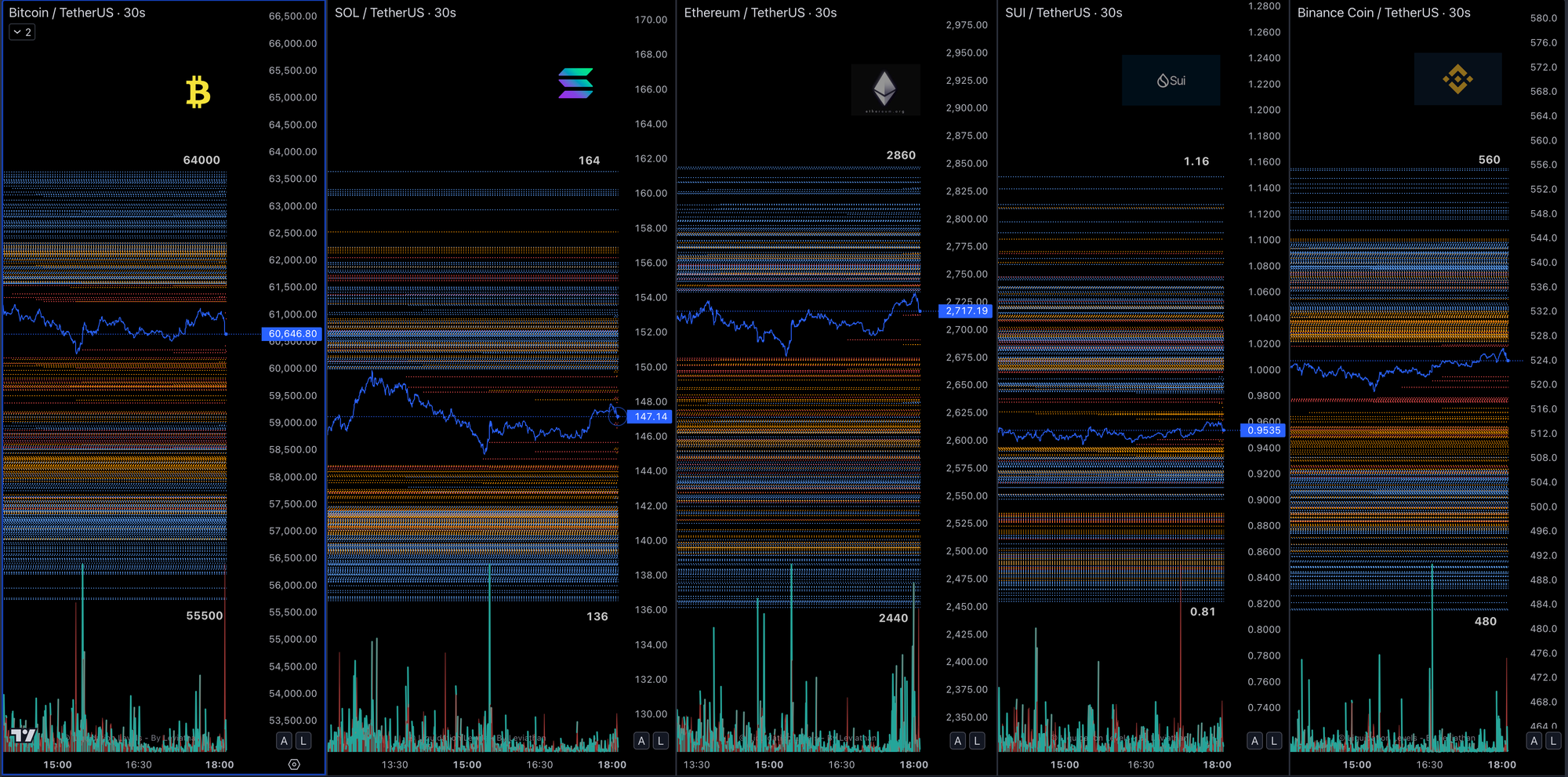LP
As a DeFi liquidity provider (LP), I’ve developed a strategy that allows me to earn my living through passive income by leveraging concentrated liquidity pools, primarily on the Solana network. Here's a breakdown of how I achieve consistent yields and the factors that make Solana my network of choice.
Why Solana?
Solana stands out as the only network where you can reliably achieve daily yields of 0.8-1.2% within 7-10% concentrated liquidity ranges over a 30-day period. This level of yield is significantly higher than what’s achievable on other networks like Ethereum, Arbitrum, and Sui, which typically yield only 0.1-0.3% over the same period, unless you take on the risk of extremely tight pools.
The key advantage Solana offers is its high volume, which is about 10 times greater than other networks. As a volume trader, this is crucial because my strategy revolves around profiting from the high frequency of trades rather than directional price movements. High trade volumes mean more transaction fees, and thus more yield for LPs like myself.
Concentrated Liquidity Pools
I primarily trade $SOL/$USDC pools on platforms like Orca, Raydium, and Meteora. By providing liquidity within specific price ranges, I can maximize the fees I collect from each transaction that occurs within those ranges. As long as the price of $SOL stays within my set range, I continue earning yield. If it moves out of range, I exit the position and rebalance.
The Downside of Other Networks
Ethereum, despite being a dominant player in DeFi, is not suitable for my strategy due to the high gas fees. Entering and exiting positions on Ethereum requires larger liquidity ranges, leading to much lower yields. This approach only makes sense if you’re working with substantial positions, typically over $100k, which isn’t realistic for most traders.
Understanding LP Yield
Liquidity provision is a form of passive income where you lend your assets to a blockchain contract in a fully decentralized, permissionless environment. Unlike traditional investments, where you might profit only from price appreciation, in DeFi, you earn small fees for every swap or trade made using your assets within an Automated Market Maker (AMM). This means you can profit whether the price moves up or down, as long as there’s trading volume.

Set your LP Ranges
By carefully selecting and managing your price ranges, you can maximize your yield as a liquidity provider. The liquidation levels shown in the image help you visualize your set ranges and manage your positions to stay profitable. This is particularly effective on high-volume networks like Solana, where frequent trades within your range can generate substantial fees. As an LP, your liquidity earns trading fees only while the asset's price stays within your chosen range. The top and bottom lines in each chart mark the boundaries of this range—if the price moves beyond them, your position stops earning yield.

The goal is to set a range that is wide enough to capture significant trading activity but narrow enough to maximize your fee earnings.
High trading volumes are ideal for range trading since more trades mean more fees collected within your range. As prices fluctuate, you might exit and rebalance if the price nears the edge of your range to stay within an active zone. For example, with Solana (SOL/USDT), if your liquidity range is set between $147 and $164, you earn fees as long as the price stays within that band. If the price moves outside this range, you need to adjust to remain profitable.
The key is profiting from every trade within your range, whether prices go up or down, especially in volatile markets.
You need approximately $30K in capital to generate $10K per month at a daily ROI of 1.1%.
Earning 1.1% daily equates to an annual return of about 350%, which is significant compared to traditional financial markets.
Be Your Own Bank
In DeFi, you have the opportunity to be your own bank, profiting from the volume generated by trades rather than relying on price movements dictated by market makers. My customers are high-frequency trading bots, which make up 90% of the trading activity in my pools. These bots generate the consistent volume.
